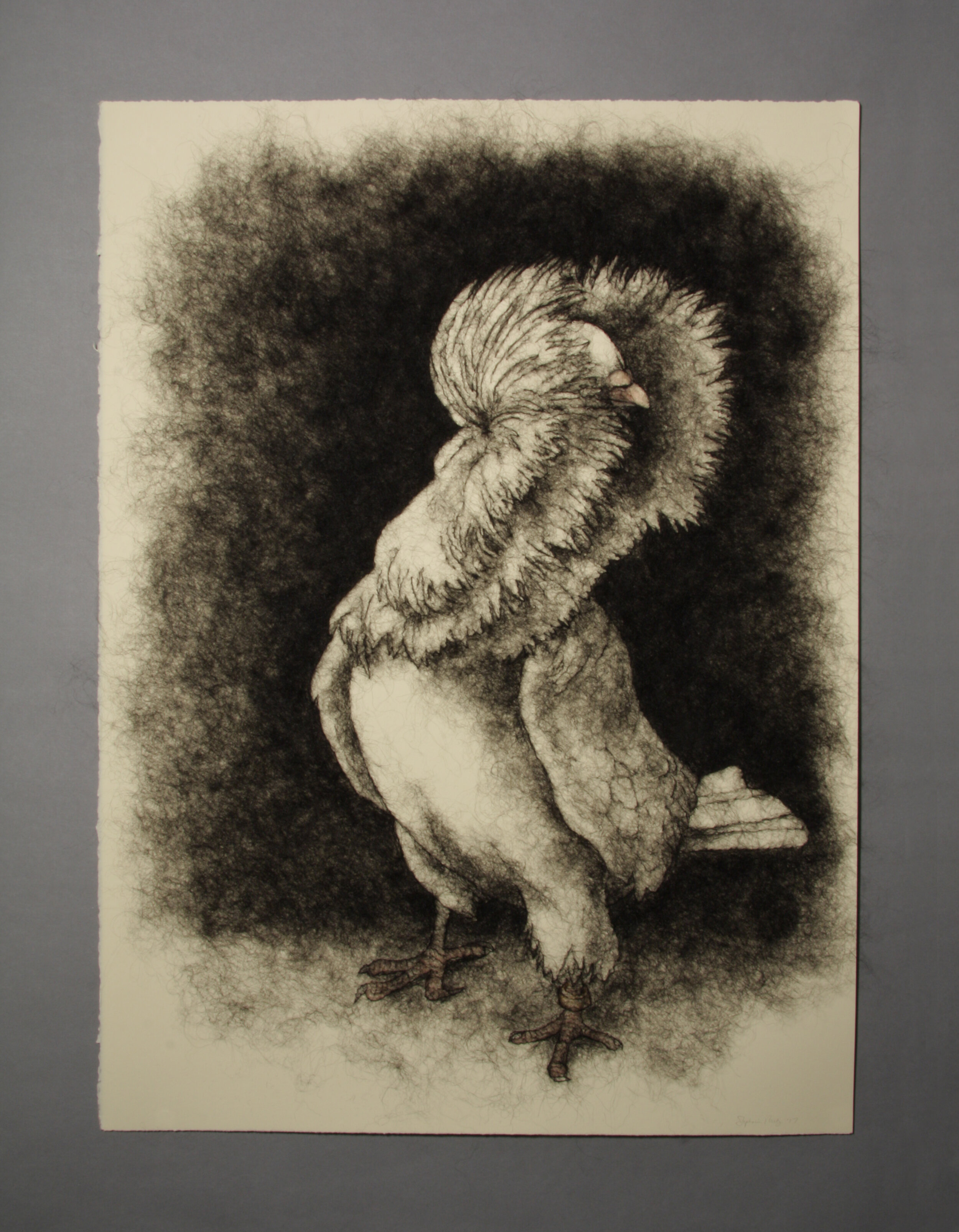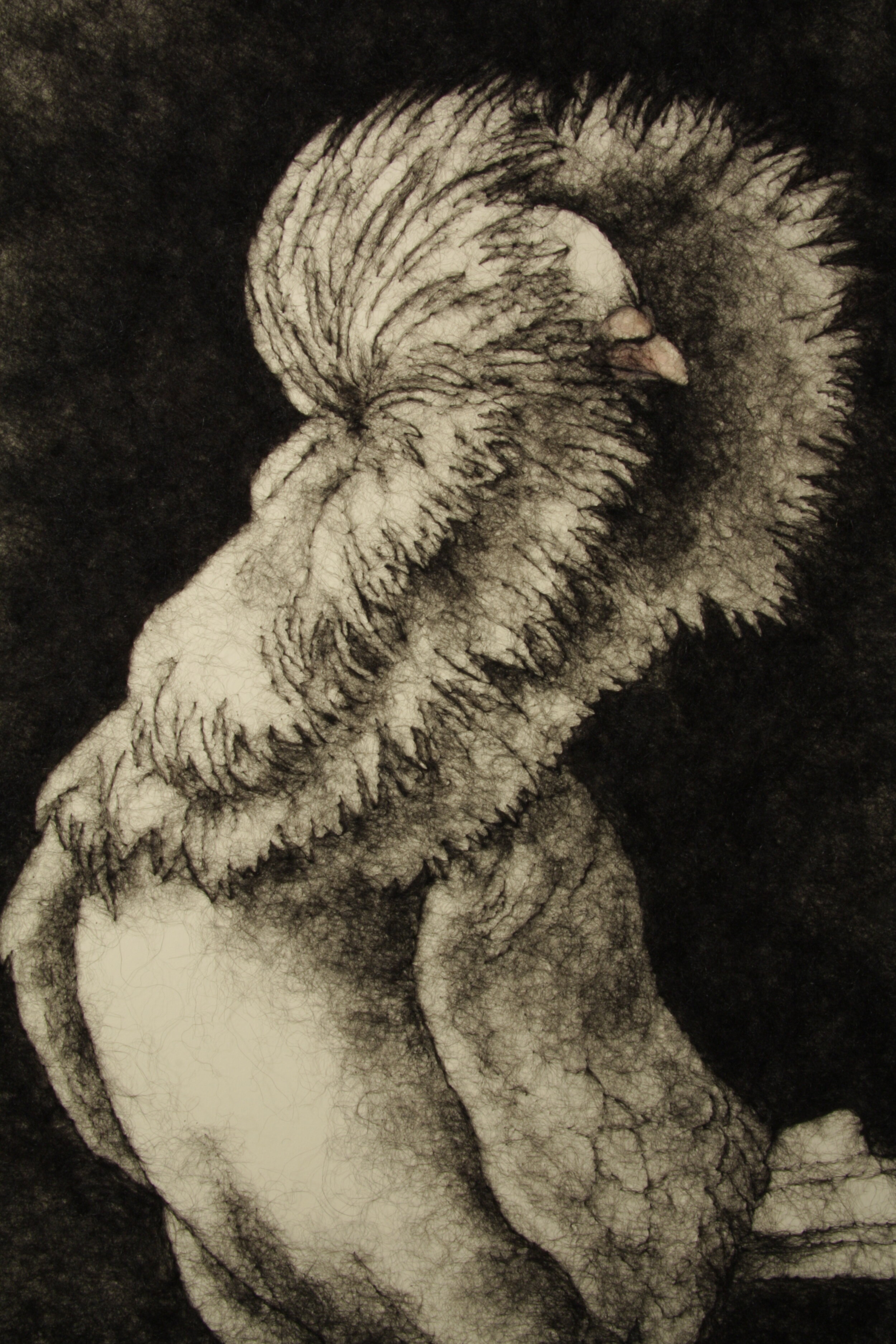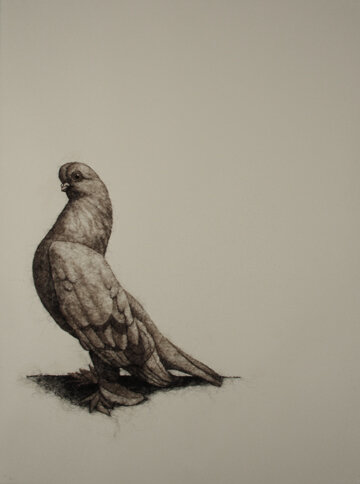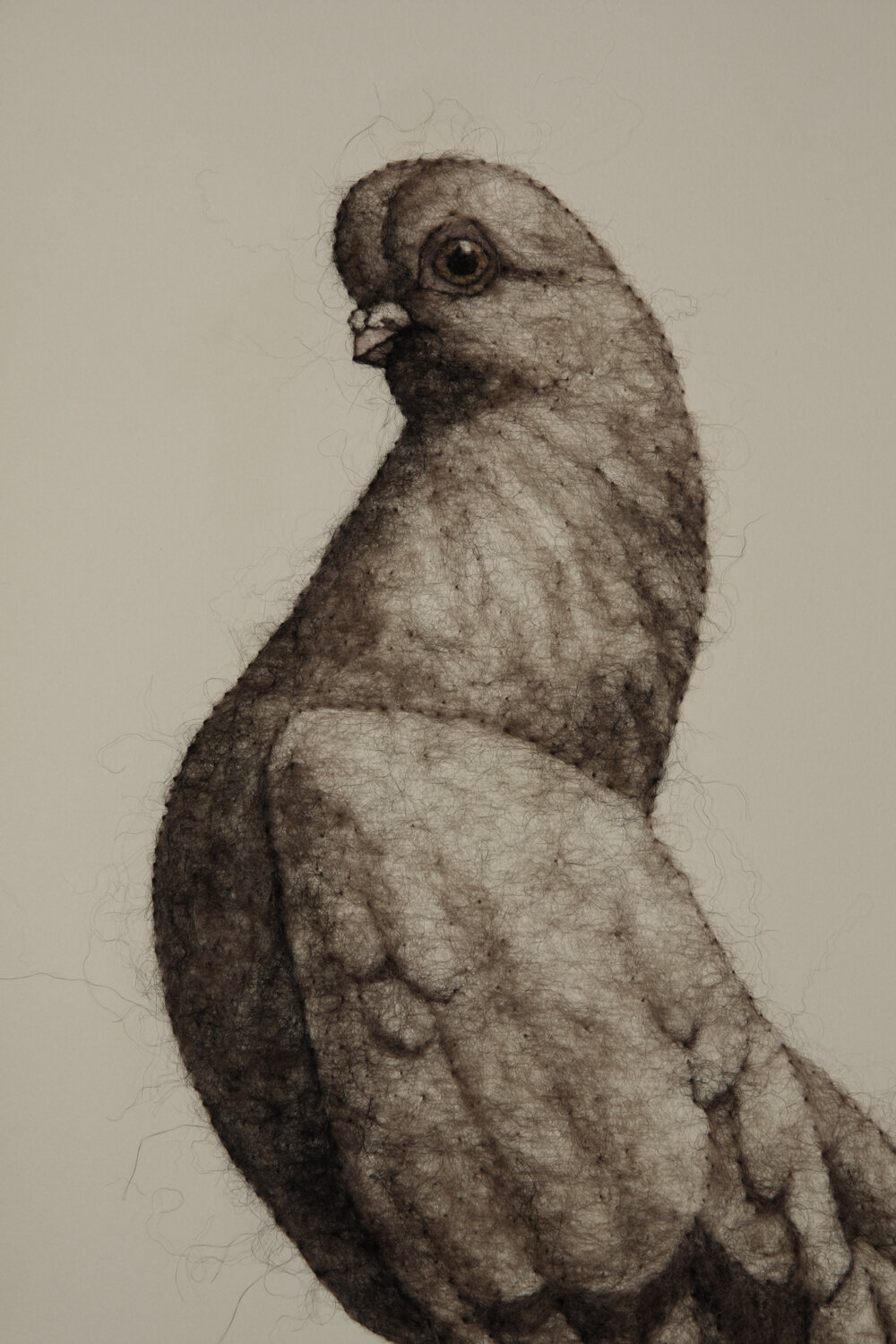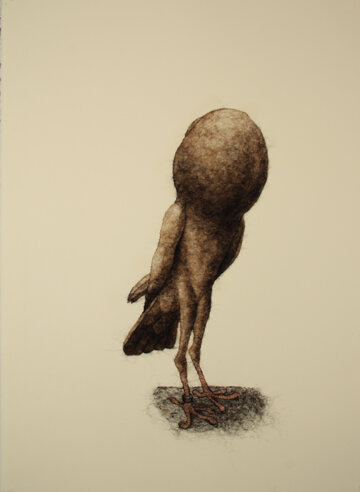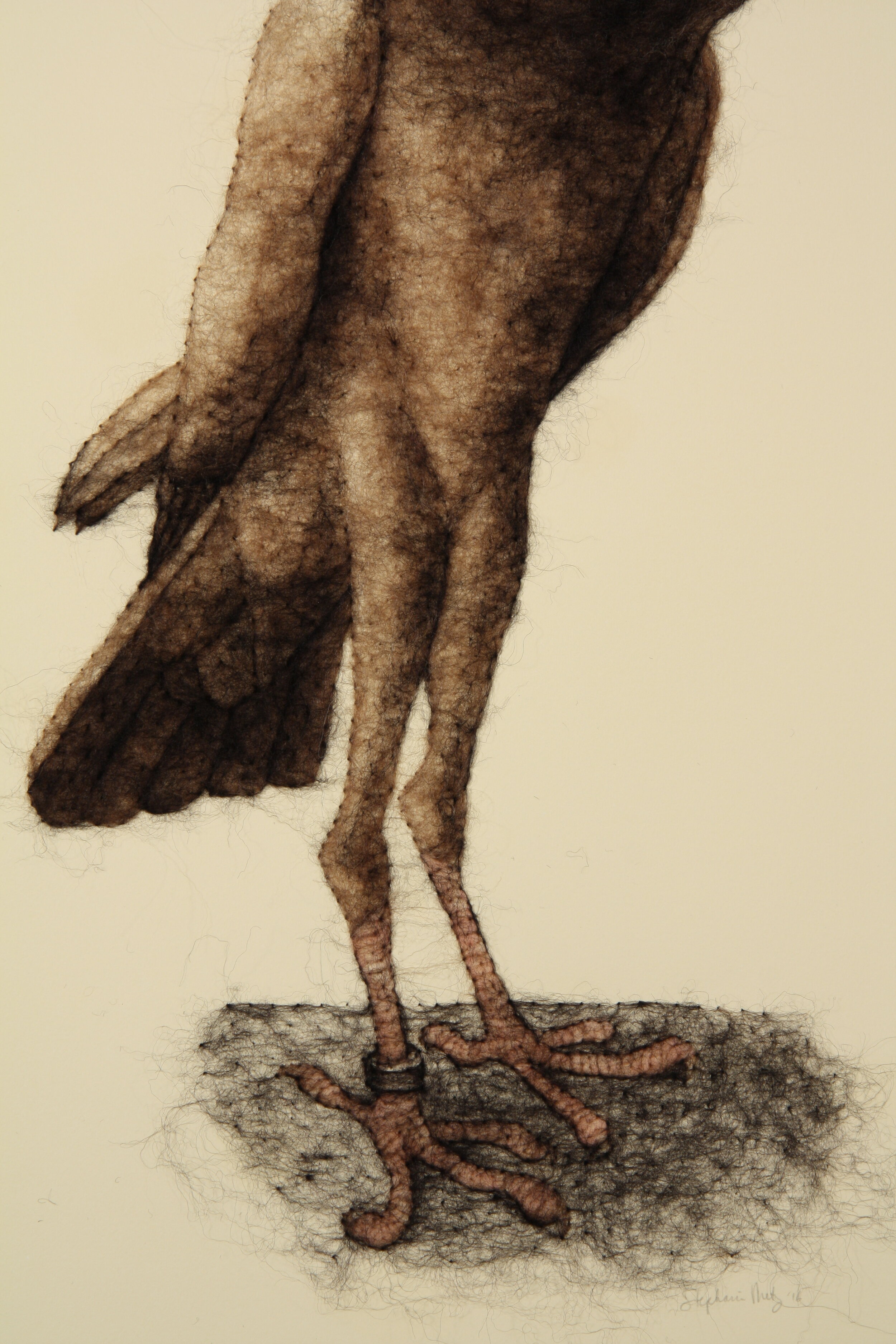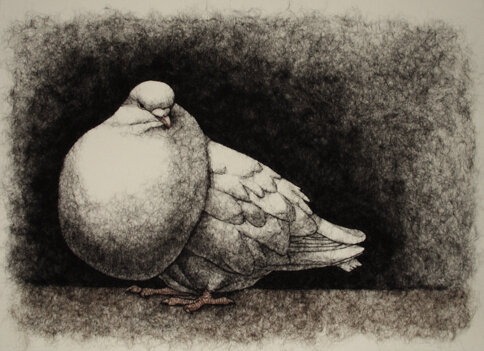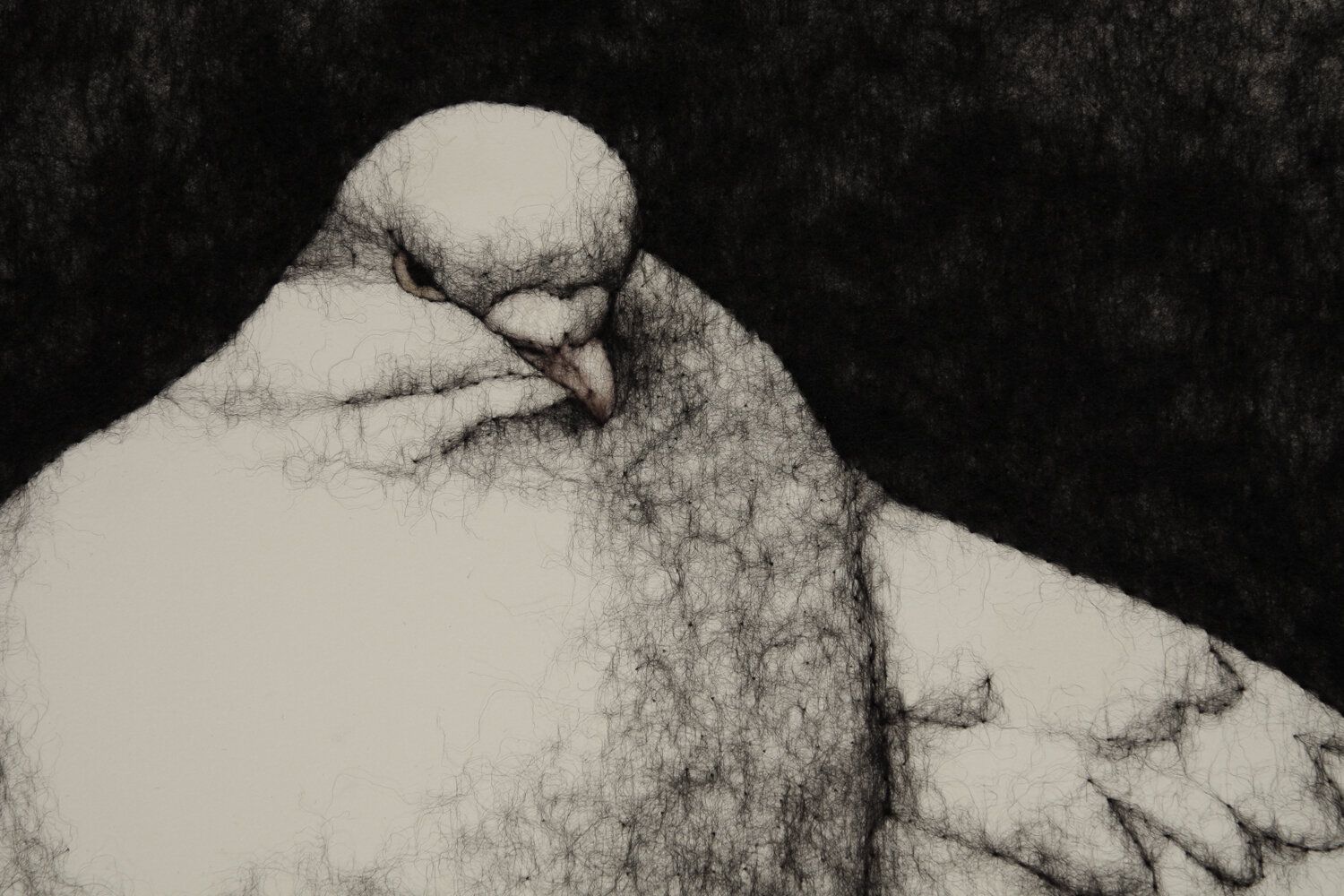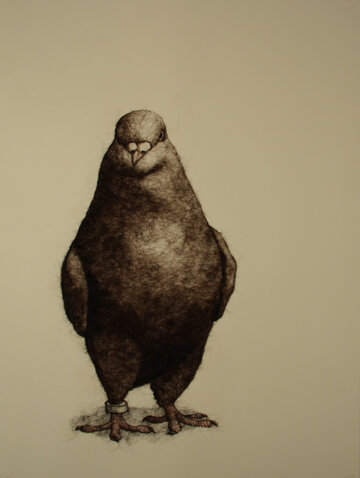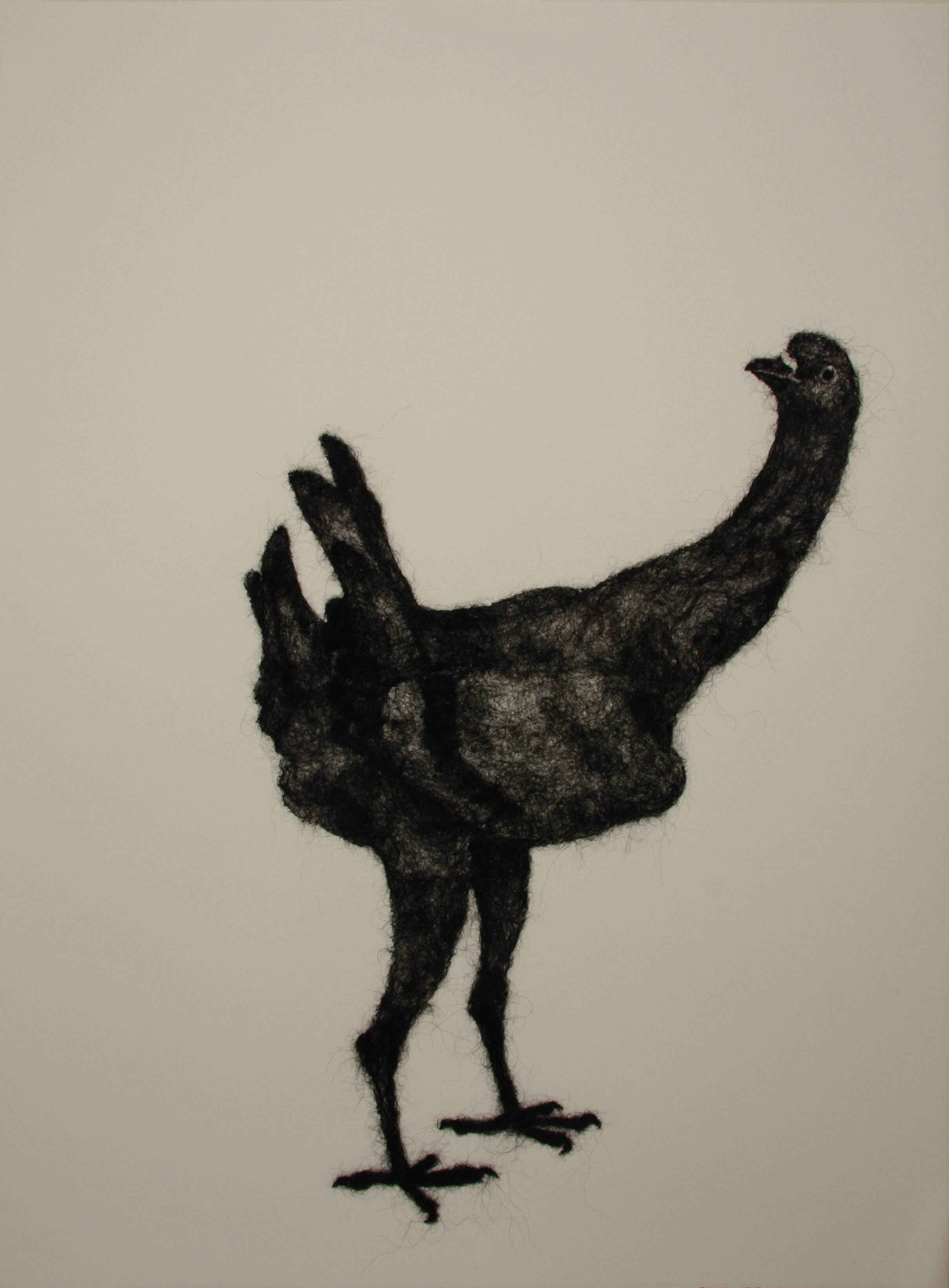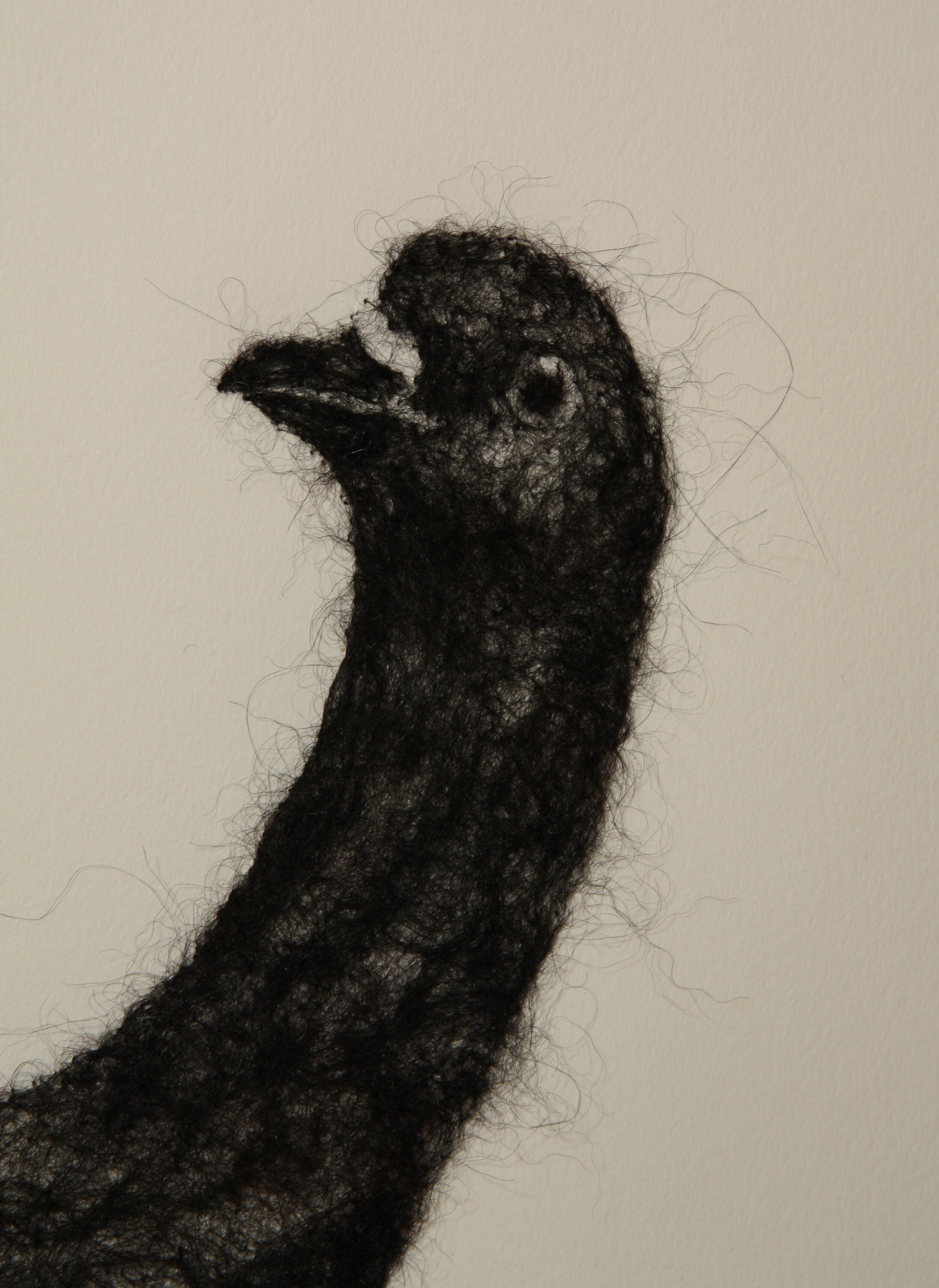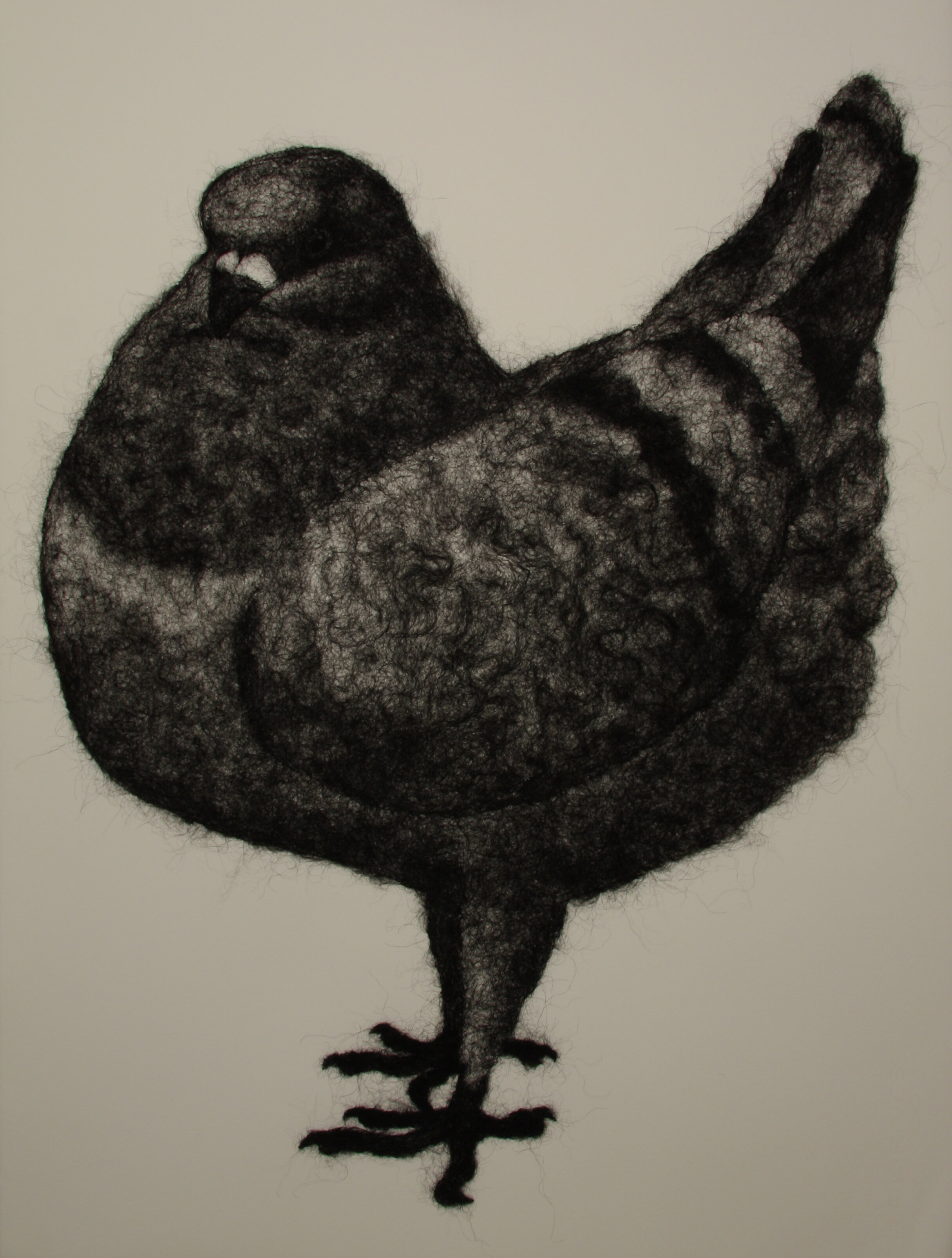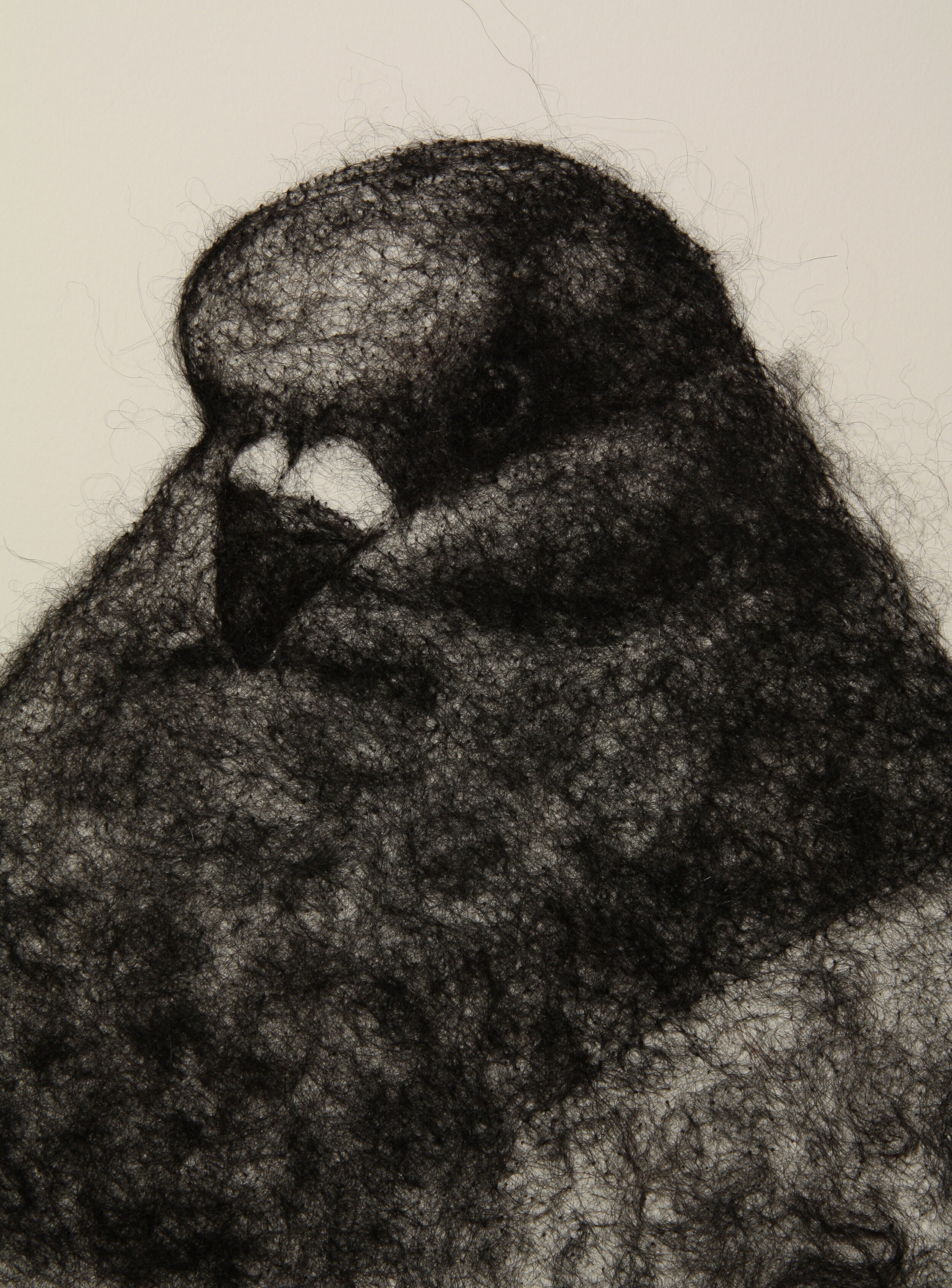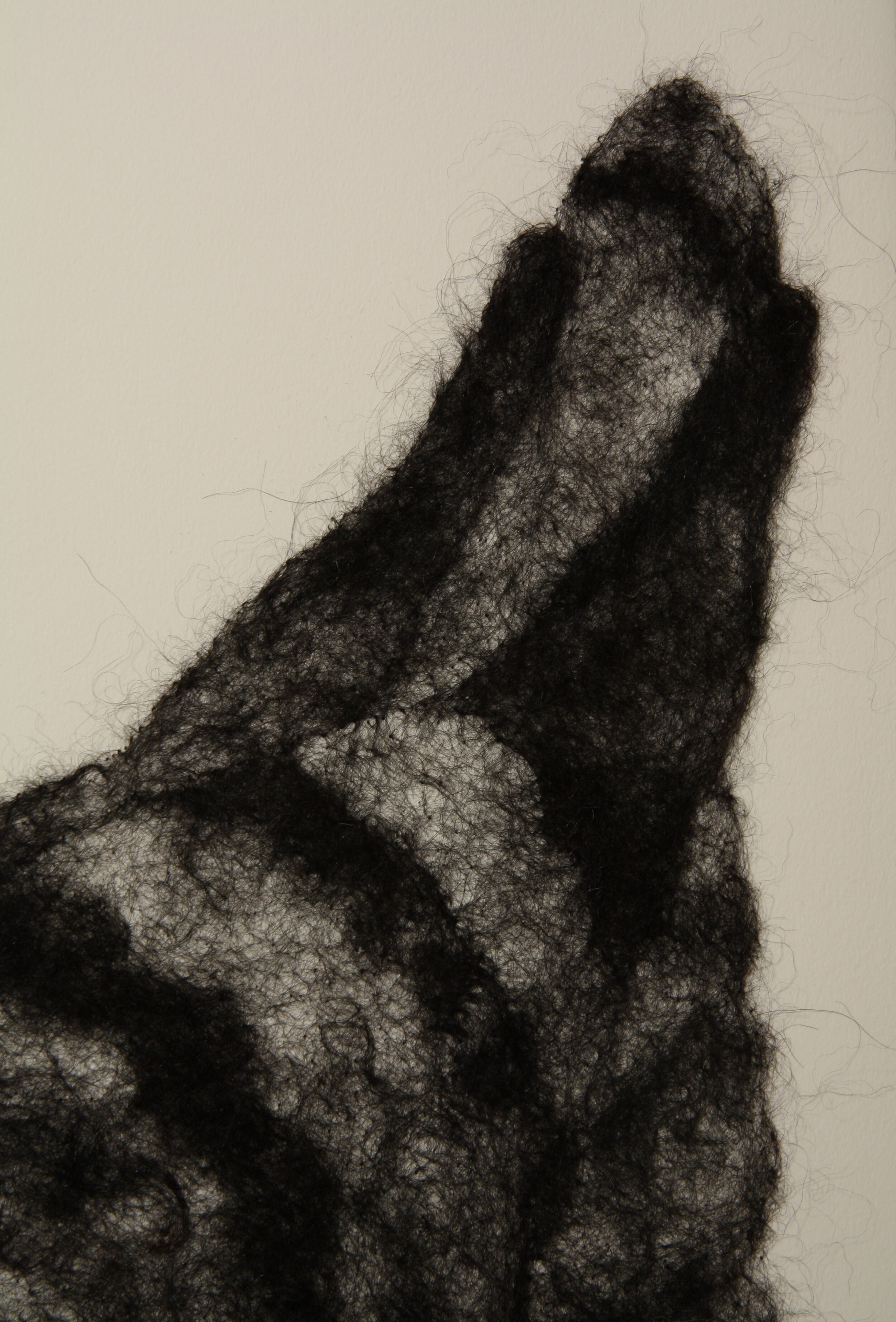Weird Birds/ Wool Drawings
The first drawing pictured, ‘Jacobin,’ is currently featured in ‘Bird, Nest, Nature’ at the Bedford Gallery in Walnut Creek, CA. As dramatic and strange as it may appear, it’s a portrait based on a real breed of pigeon, carefully bred for its unique appearance. This kind of manipulation of natural forms— particularly of the non-plant living organism type— is right up my alley, and serves as inspiration.
Birds are physically elegant in the large view, but delightfully grotesque in certain details. I'm attracted to the way scaly feet betray the fact that their smooth feathers hide wiry, bony, fleshy animals that are more lizard-like than mammalian in their evolutionary connection to dinosaurs. I am a particular fan of pigeons because they are polarizing creatures: many people consider them to be disgusting, disease-carrying 'flying rats,' some (including myself) admire their ability to successfully co-evolve with humans, and a subculture of fancy pigeon breeders creatively exploit their mutations to produce an astounding array of impossible-looking living specimens of extreme domestication. The drawings above are fairly accurate portraits of actual pigeon breeds.
For me pigeons represent the way birds serve as vessels for the human imagination—more often than not defined by their use to humans as food (Passenger pigeons were hunted to extinction in 1914), tools (Carrier pigeons were used for frontline communication in WWI and WWII, and some even awarded medals for their service), entertainment (the Parlor Roller breed that travels by flapping and rolling across the ground is bred for competitive ‘bowling’ contests), or decoration (plumage color, shape, and location varies astoundingly among fancy pigeons). For my purposes pigeons are emblematic of the complicated relationship between humans and the natural world. And ‘Fancy Pigeons’, like the breeds shown here, are also delightfully weird.
These works on paper were created using wool fiber as a drawing medium. Rather than adhering the wool to the paper, I invented a technique of pushing fibers through the surface using a sharp, notched felting needle. To ‘draw’ with wool I define outlines and anchor more or fewer brown and black fibers to create the effect of different shades of dark and light. These drawings are a study in opposites: from afar the images appear solid, defined, and graphic, but upon closer approach they become more detailed yet also less distinct as the individual fibers come into focus. The fibers are loose and gestural within the confines of carefully controlled mark making; they are two-dimensional depictions that take place in three-dimensional space. I hope you can see one in person!

